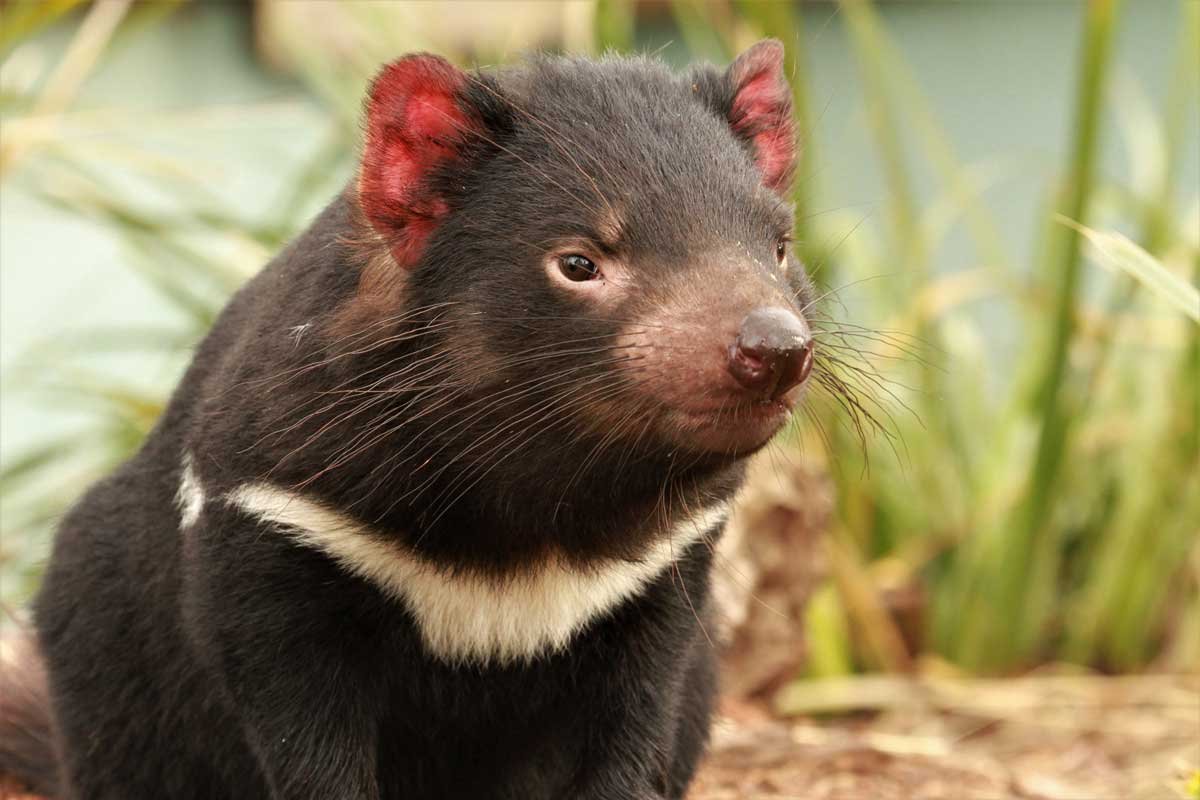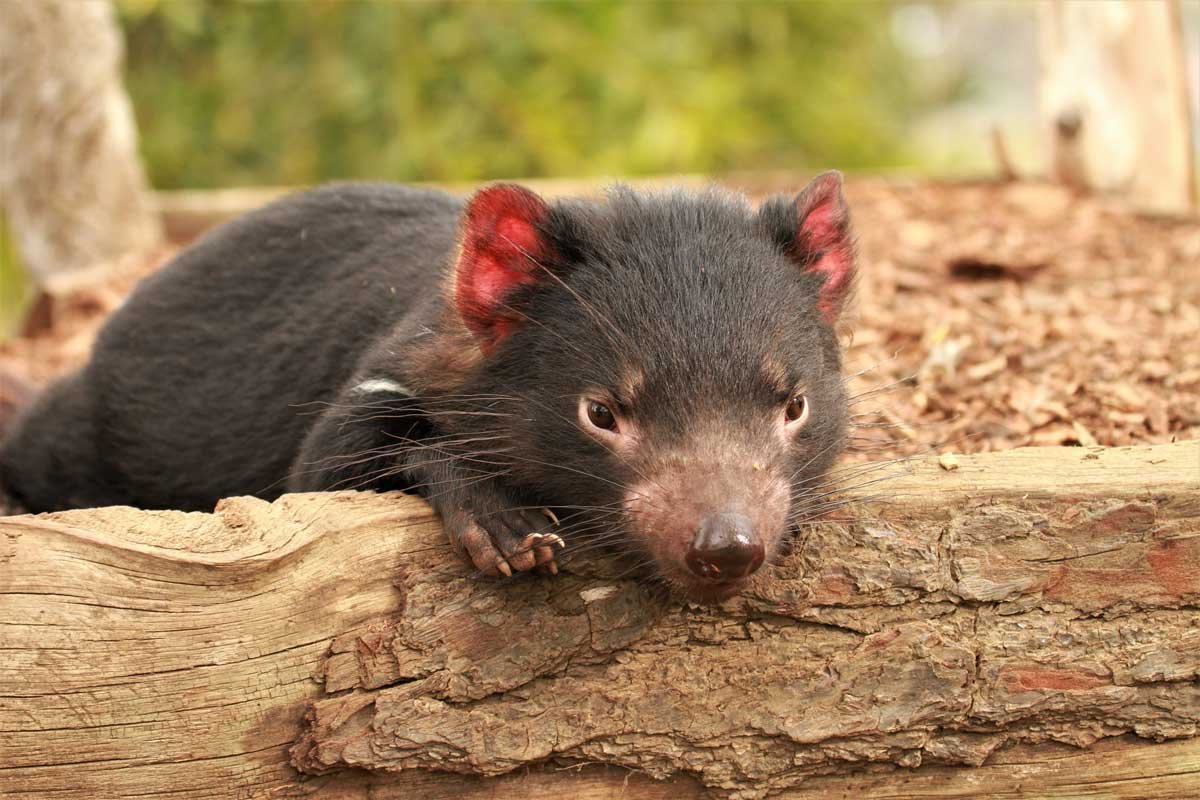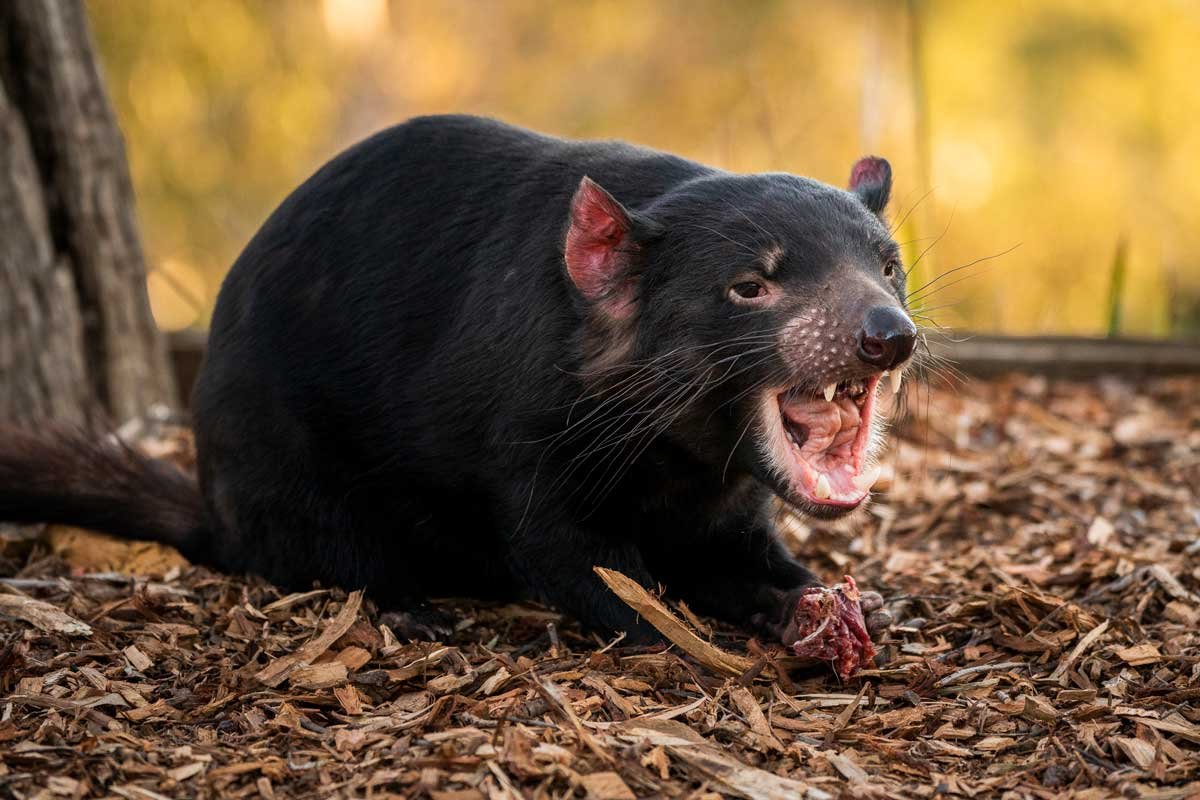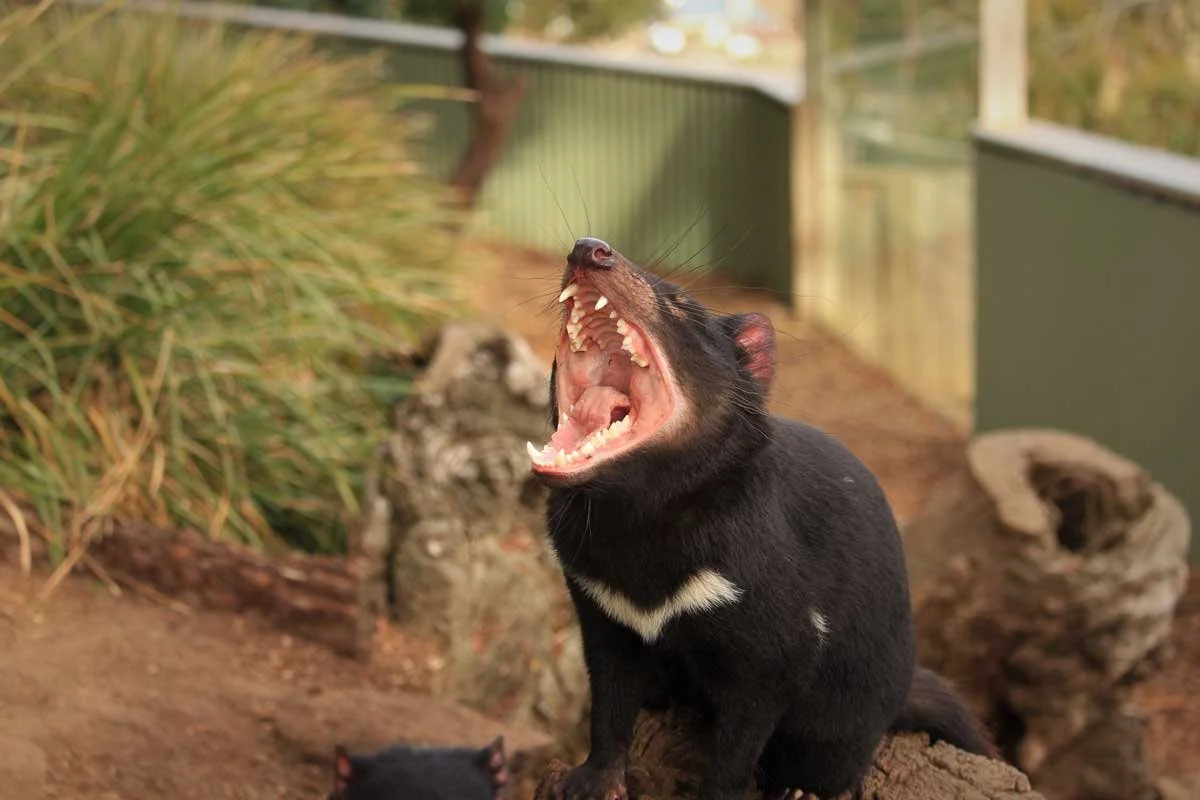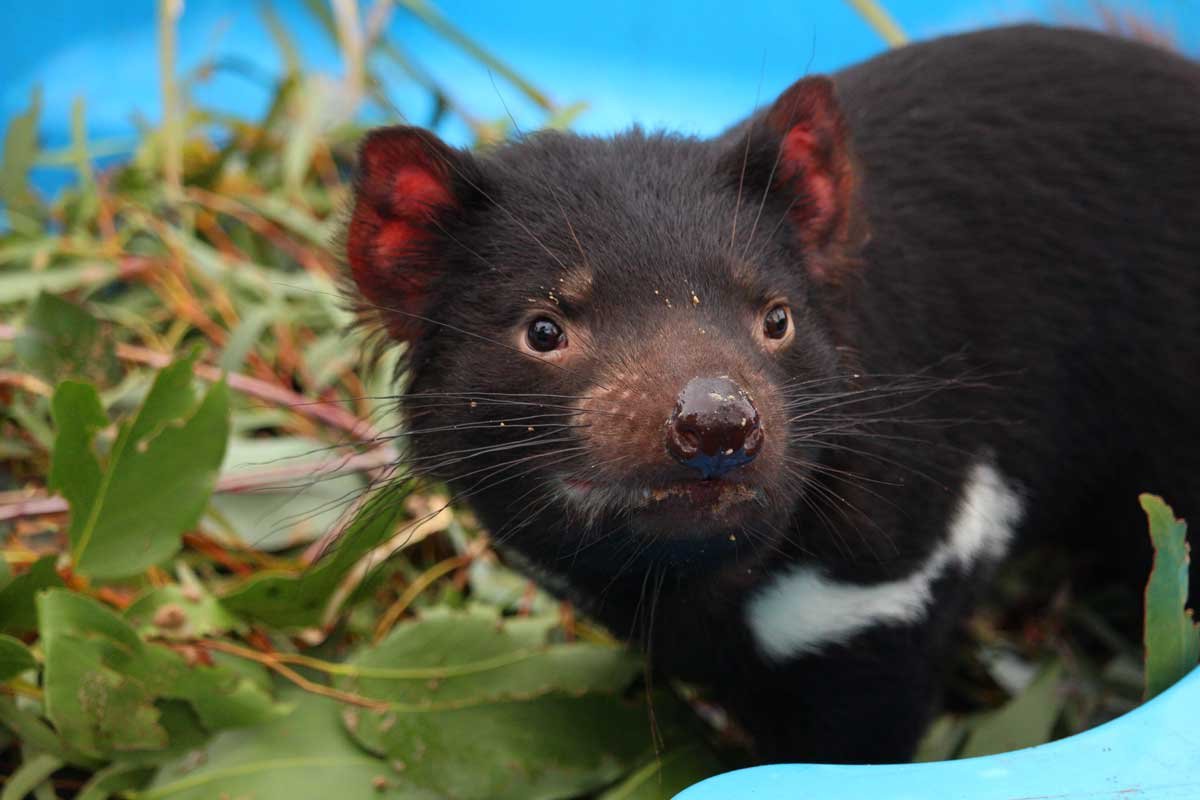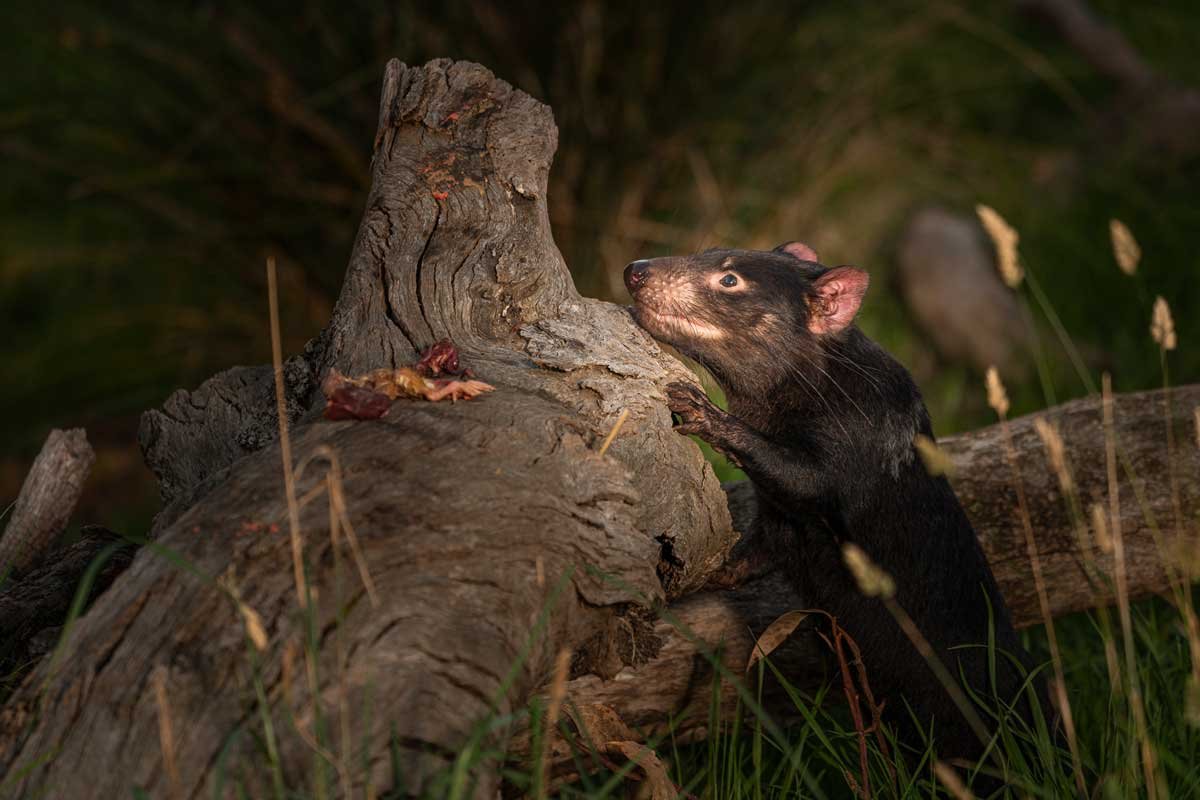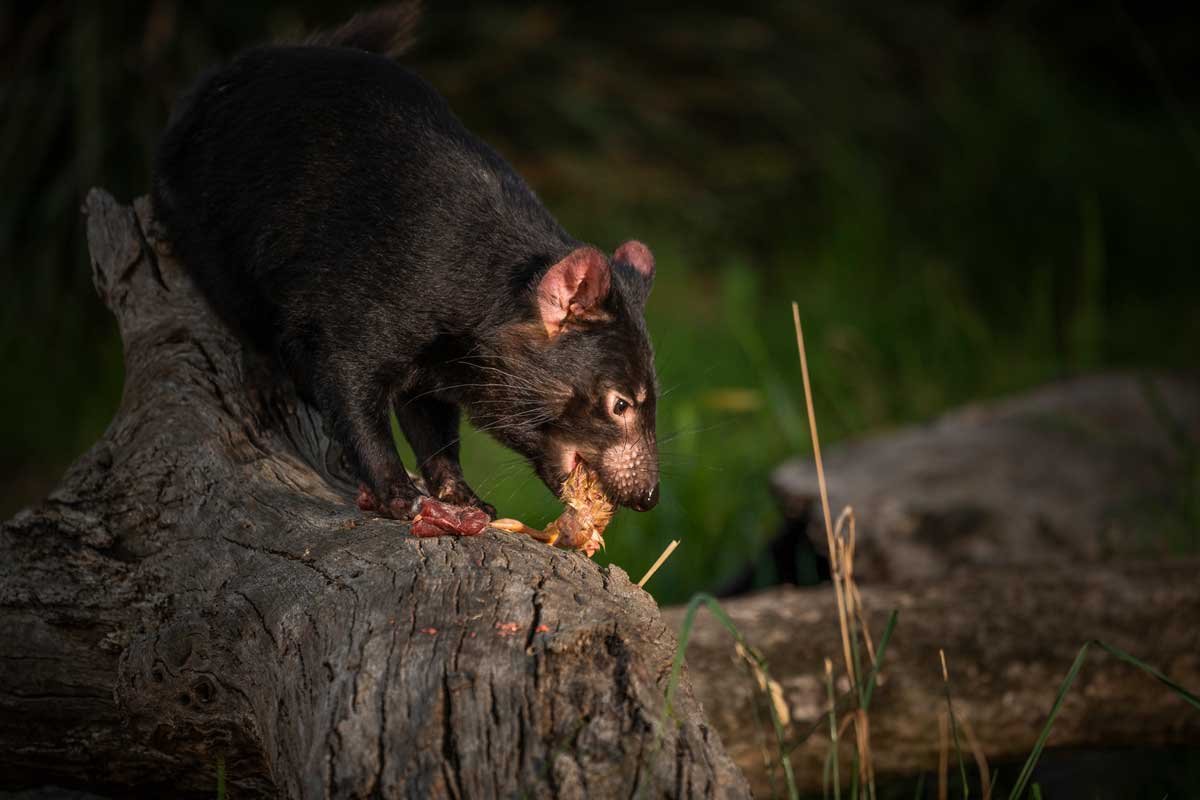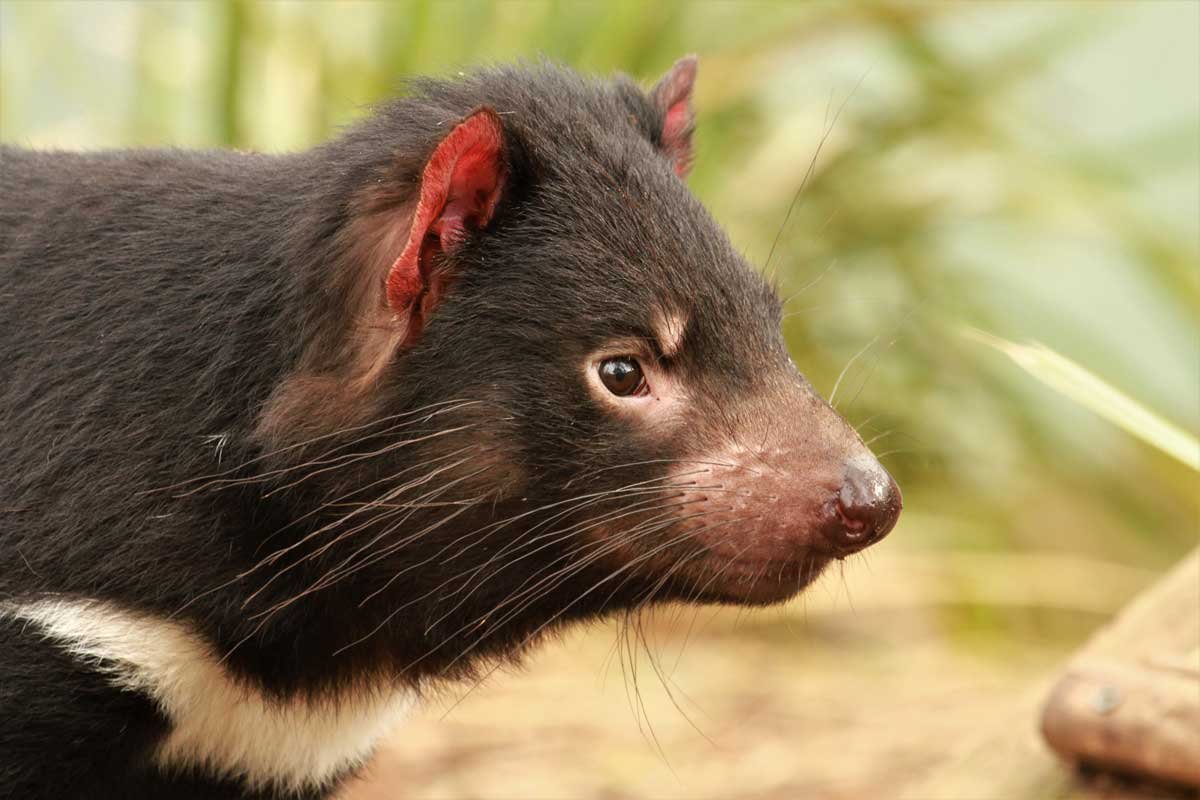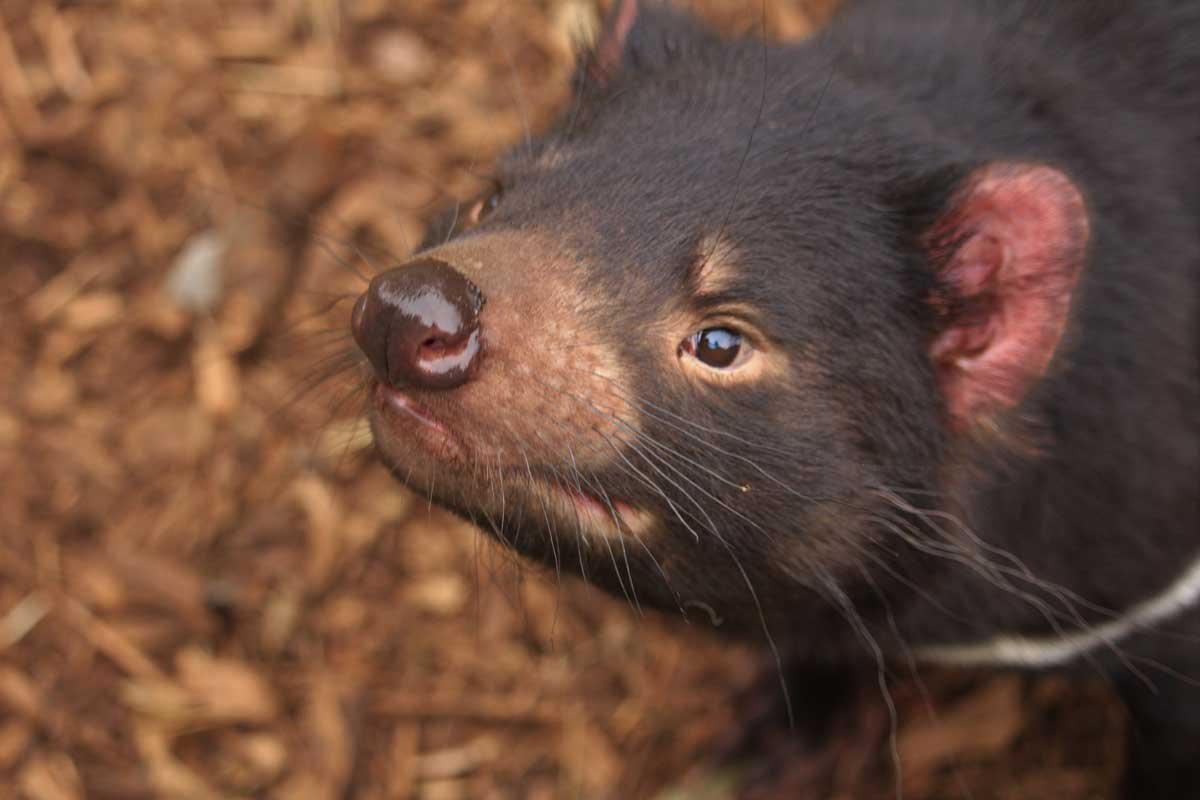20 Amazing Facts about the Tasmanian Devil!
Written for Bonorong by Pink Lemonade Social
Before we get to the twenty amazing facts about Tassie Devils, let's cover the basics. The Tasmanian Devil is a standout in Australia's collection of one-of-a-kind creatures. To learn more about the Tasmanian Devil, travel to Tasmania and visit us at Bonorong, where you can see devils or up close in one of our Animal Encounters, take pictures and watch kangaroos hop around the sanctuary. The Tasmanian Devil is an important Australian species and a beloved emblem for Tasmania.
What is the Tasmanian Devil?
The Tasmanian Devil is a carnivorous marsupial that lives in the wilds of Tasmania. It is considered to be one of the world's most ferocious animals (but really they aren’t), and it has been given its name because it makes a loud, roaring noise that sounds like a devil.
The Tasmanian Devil is often portrayed as an evil, savage animal in movies and cartoons. However, this couldn't be farther from the truth. In reality, the Tasmanian Devil is a shy creature that prefers to live alone or in small family groups.
The Tasmanian Devil is an opportunist and scavenger, and its diet consists mainly of meat such as small mammals, birds, reptiles and insects.
Where to See a Tasmanian Devil?
Tasmania is the home of the Tasmanian devil, and there are many places in Tasmania where you can see Tasmanian devils. They can be seen at Bonorong Wildlife Sanctuary and sometimes even in our Wildlife Hospital. It can be rare to see Tasmanian devils in the wild due to their shy nature, but visiting one of Tasmania’s National Parks may give you a glimpse if you are lucky!
What Threats Do tasmanian devils Face Today?
The Tasmanian Devil is an endangered species. The extinction of this animal would be a huge loss to the world. There are many threats that they face today, and we need to take action if we want to prevent their extinction.
One of the largest threats they face is the devil facial tumour disease (DFTD). The disease has been devastating for the population of the Tasmanian Devils, and it has been spreading rapidly since its discovery in 1996.
20 Interesting Facts About Tassie Devils
1. Tasmanian Devils Are Only Found in Tasmania
Only in the Australian island state of Tasmania are wild Tasmanian devils to be found. Every part of the island has Tasmanian devils, from the coastline to the mountains. Coastal heath, open dry sclerophyll forest, and mixed sclerophyll-rainforest are the preferred habitats of devils.
2. Tasmanian Devils used to Live on Australia’s Mainland
Fossils of Tasmanian Devils have been found scattered throughout the mainland of Australia. It is believed that they became extinct on the mainland around 3000 years ago, well before European settlement. Their top predator was the Dingo which completely wiped out the population; however, it's lucky that there are no dingoes in Tasmania.
3. Tasmanian Devils Are an Endangered Species
In the early 90s, a horrible disease called the Devil Facial Tumour Disease (DFTD) was discovered, killing thousands of Devils. The rapid spread of devil facial tumour disease, which has killed 90 percent of the species' population since 1990, has made the species endangered. Wild devil populations in Tasmania were numbered at 16,900 by 2021.
DFTD is highly contagious and very fatal as it causes cancerous lumps to form around the devil’s mouth and head. Unfortunately, there is still no cure for DFTD, but scientists are working hard to ensure the last population of the Tasmanian Devil doesn’t go extinct.
4. Tassie Devils Have a Dark Past
Tasmanian Devils didn't have it all their own way in Tasmania. Those who nicknamed them Devils (a theory that has since been debunked) hunted and poisoned them to near-extinction until the government stepped in to protect them in the 1940s. European settlers in Tasmania regarded the Tasmanian devil as a pest because it preyed on their farm animals like chickens, ducks, and geese. Citizens were financially rewarded for hunting and killing Tasmanian devils, which lasted for years. Once devils were protected in 1941, the population rebounded.
5. Tasmanian Devils Were Named After Their Scream
Tassie Devils got their name ‘Devils’ from their blood-curdling screams. When early settlers heard the screeches, they believed that the noise was those of a demon hiding in the bushes around them. Tasmanian devils make a lot of different sounds, often described as growls, screams, screeches and coughs, all of which are a defence mechanism to scare off predators and other devils.
6. Tasmanian Devils Have a Powerful Bite!
Tassie devils have the strongest bite of any mammal of their size in the world, thanks to their oversized heads and extending jaws. Their jaw can open as wide as 80 degrees and has enough force to crush bones, bite through metal and break through farming fences. It is estimated to have a density of 544 kg per sq. in. This aids them in the process of breaking down and eating bones. They also have plenty of digestive enzymes to allow them to break down the bones of their prey.
7. Tasmanian Devils Have Unique Teeth
Even the teeth of a Tasmanian Devil are one-of-a-kind. Although they have 42 teeth like a dog, unlike dogs, a Devil's teeth grow continuously throughout its life, allowing it to consume the bones of its prey with incredible efficiency.
8. Tasmanian Devils Smell
Tassie Devils have a natural smell that is similar to that of a wet dog. They also have a scent gland that is used to mark territory by emitting an unpleasant odour.
9. A Fat Tail Equals a Healthy Devil
Tasmanian devils store fat in their tails, a trait of all marsupials. This means that a fat tail on a devil indicates a well feed and healthy devil, and a skinnier tail indicates that a devil has gone a long period without food and is usually malnourished. The Tasmanian devil’s body can draw out energy and nutrients from its tail when food gets scarce.
10. Tasmanian Devils Are Marsupials Like Kangaroos!
Similar to kangaroos and possums, Tasmanian Devils are marsupials. The pouches of female marsupial animals are used to carry their offspring. Tassie Devils also happen to be the largest surviving carnivorous marsupial on the planet! As carnivores, the Tasmanian devil consumes meat as well as scavenges throughout their environment. They’re known as "bush vacuum cleaners" because they'll eat anything they can get their hands on, including roadkill. Farmers benefit from this because it reduces the number of maggots, which can cause a fly strike in sheep. Lizards, snakes, birds, frogs, and even small wallabies are some of the creatures they hunt when they aren't scavenging.
11. Tasmanian Devils Are Only Pregnant for 3 Weeks
About 21 days are required for the gestation period of a devil mother. For about four months, the mother carries her young, known as imps or joeys, in her pouch. The mother leaves the joey in a simple den when they are ready to leave the pouch. It takes a lot of effort on the part of the mother to care for her children. She'll return to the den on a regular basis to give them milk. At the age of 10 months, the Tasmanian Devil young are ready to be weaned.
12. Tasmanian Devil Babies (Joeys) Are Born The Same Size As A Grain Of Rice
Since the Tasmanian Devil is a marsupial, its young are called joeys, similar to its relatives such as wombats and kolas. A mother gives birth to around 20-40 joeys at a single time, which are roughly the same size as a grain of rice. However, a mother devil only has four teats to raise her young.
13. Baby Devils Must Race to Survive!
Female marsupials have pouches that their newborns feed in and are protected from the bush for their first few months of life. Although a Tasmanian Devil only has four teats to raise joeys, a mother will give birth to at least 20 to 40 joeys at one time, which means the newborns must race from her birth canal to her pouch in order to survive. The ones who don’t make it to the pouch in time will not make it due to being the size of a grain of rice and too weak and vulnerable to the harsh reality of the Australian bush. Many also end up as food for the mother devil herself.
14. Tasmanian Devils Aren’t Dangerous
Tassie devils are not dangerous or a threat to humans. They do not attack people, but if they are attacked or trapped, they will defend themselves. Devils may appear to be fierce, but they would rather flee than fight. However, devils have powerful jaws and can cause serious injury when they bite.
15. The Scientific Name for Tassie Devils is Interesting
The Tassie Devils scientific name is Sarcophilus harrisii. This translates to ‘Harris's meat lover’. George Harris was the scientist who described the Tasmanian devil. The first of the name ‘Sarcophilus’ is a genus which all the carnivorous marsupials are classified as. The Tasmanian devil is the only living member of the genus Sarcophilus following the extinction of Thylacine, also known as the Tasmanian Tiger, in 1936.
16. Tassie Devils Are Great Tree Climbers and Swimmers
Younger devils are great climbers as they are more agile than older devils who, with age, lose the ability to climb trees. Their front legs are longer than their back legs, and using their large footpads on their back legs to create friction, stops them sliding back or off from a tree trunk. Adult devils are known for eating young devils, so their climbing ability allows them to escape the adults they encounter. Tasmania devils are also strong swimmers and often play in the water with their front paws. They also use pools of water to cool down and will sit or lay down in the water for periods of time. However, if a mother has joeys in her pouch, they will avoid swimming.
17. Devils Are Helpful to the Environment
Devils most emphatically are helpful to their surrounding environments. By eating sick and dead animals, devils play an important role. They most likely also aid in the control of feral cats in Tasmania, which helps to protect some of our native species, such as birds. They can even assist us in controlling animals that do not belong in Tasmania, such as foxes, which is a major problem on the Australian mainland. While there are many devils in Tasmania, it makes it difficult for foxes or cats to breed. Fox dens are very smelly and messy, so devils can easily detect them. Tasmanian devils introduced into Australian habitats could eat young foxes and cats while also competing for food during critical breeding periods, reducing the reproductive success of pest species.
18. Devils Can Eat Up to 40% Of Their Body Weight in a Day
An average adult devil weighing 10 kg will consume up to 1 kg of food per day, though devils can consume up to 40% of their body weight in one sitting if they are unsure when they will find their next meal.
19. Tasmanian Devil's Famous Yawn
Originally it was thought a devil’s famous yawn was a sign of aggression. However, this has been disproven. Tasmanian Devils often yawn when confronted or as a sign of fear, anxiety, excitement or stress rather than aggression. Yawning can be a sign of good stress as well as bad stress, and you will often see a devil yawn when it's dinnertime.
20. Tasmanian Devils have Big Heads
Adult devils appear to have heads that are almost too large for their bodies. In older male devils, the head and neck can account for nearly a quarter of their total weight.
Tasmanian Devil's Population Today
The Tasmanian Devil population has recovered from their original persecution and hunting, but they are once again in jeopardy. Tasmanian Devils have adapted to modern life, with these carrion eaters discovering a new food source in roadkill... Except that at night, these black animals eating roadkill are invisible to oncoming traffic, and they, too, are killed in large numbers on roads. Furthermore, the devastating facial tumour disease that is spreading throughout the population. Tumours form in affected animals' mouths and prevent them from eating, causing them to starve to death. Since the disease's discovery in the late 1990s, tens of thousands of Tasmanian Devils have died. Recent studies on DFTD have found the curve has flattened, and the rate of infection increase has slowed. This means that, while the disease is unlikely to go away, neither will Tasmanian devils.
Tasmanian Devils have been listed as endangered since 2008. Wildlife sanctuaries such as Bonorong try to save and raise young in the pouches of mothers killed on the roads, those who are injured and helping to prevent the spreading of DFTD, as well as supporting programs aimed to isolate and breed disease-free populations.
Visit us at Bonorong to get up close and learn even more about the amazing Tasmanian Devil.


